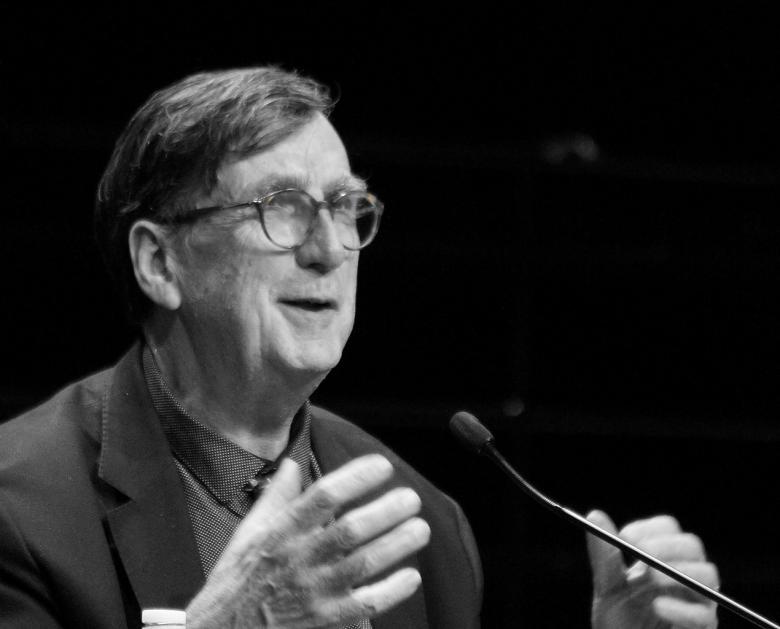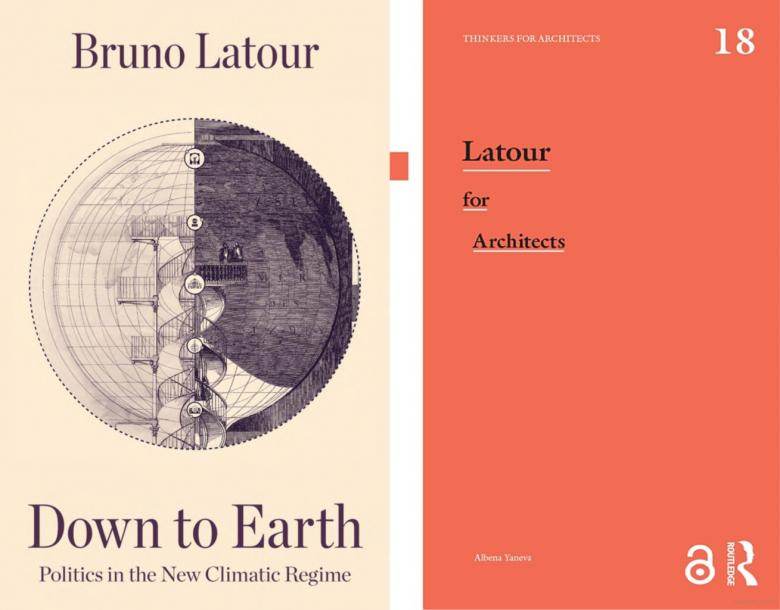In Memory of Bruno Latour, 1947–2022
Setting Architecture in Motion
Stefan Kurath
27. October 2022
Bruno Latour in 2015 (Photo: Photo: G.Garitan/Wikimedia Commons)
The philosopher and sociologist Bruno Latour died on October 9 at the age of 75. His life’s work gave important impetus to architecture. In the context of the climate crisis, his idea of a political ecology also points to the future of architecture and urban planning.
Bringing realism into playAfter studying philosophy, anthropology and theology, the Frenchman Bruno Latour accompanied scientists at work in the jungle and in laboratories. He observed and described how they proceed in their quest for knowledge. He traced the interactions between earth, microbes, researchers, tools and weather conditions. He described how measuring samples are translated into tables, statistics, texts, and diagrams. Bruno Latour was interested in how objects of study are fragmented in this process and how knowledge is gained through reduction, while the connections to the objects of study are maintained. Knowledge in this sense is constructed. However, they are not “mere” social constructions but results of sociotechnical processes, i.e. of processes in which human and non-human actors play a role, as do material and cultural conditions. Seen from this angle, scientific facts are no longer indisputable. Henceforth, they are controversial, since they depend on the circumstances of their production. Latour called the research report risky, "which means that it can easily fail — it usually fails — because it cannot push aside either the utter artificiality of the undertaking or its claim to accuracy and veracity." Latour thus exposed a central blind spot of modern science, which attempts to purge scientific knowledge of external influences through objectification, with the goal of eliminating uncertainty and gaining verisimilitude. It was Latour's intention to add realism to this scientific practice. Together with other protagonists of science research, he is considered the founder of the actor-network theory.
The insecurity that Latour's work caused among scientists was great. "Do you believe in reality?" he was once asked by a renowned psychologist who felt that Latour's work threatened science. "Of course I do!" was his reply. Latour’s research into science did not mean that he wanted to question or even attack it. Therein lies a central misunderstanding. Rather, Latour was concerned with helping scientists to arrive at even better constructions of scientific knowledge. Thus, his work in no way legitimizes fake news, as he is often accused of today. Instead, Latour's meticulous methodology would expose them in the shortest possible time as miserably constructed fantasies of political and ideological entanglements — thus denying them any form of claimed scientificity.
Bruno Latour directly addressed architecture, among other things, with an essay entitled "Give me a Gun and I Will Make All Buildings Move," which he wrote together with his former doctoral student, Albena Yaneva. In this article, they criticize the architectural objects of architectural production, most of which are represented in 3D models, and ask: "Where do you place the angry clients and their sometimes conflicting demands? Where do you insert the legal and city planning constraints? Where do you locate the budgeting and the different budget options? Where do you put the logistics of the many successive trades? […] Where do you archive the many successive models that you had to modify so as to absorb the continuous demands of so many conflicting stakeholders — users, communities of neighbors, preservationists, clients, representatives of the government and city authorities? Where do you incorporate the changing program specifics?" [1] Latour and Yaneva encourage us not to continue seeing buildings as objects in space but to look at their genesis, to open the black box of planning, and to include the impact history of the interweaving actions of both human and non-human actors in architectural and urban planning thinking.
The first English edition of Bruno Latour's Down to Earth: Politics in the New Climatic Regime was published in 2018 by Polity. Earlier this year Albena Yaneva's Latour for Architects was published by Routledge.
A different point of viewJust how compatible Latour's way of thinking is for architecture can be seen in the extent to which his ideas are present in the work of today's historians, theorists, and practitioners in architecture and urban planning. [2] It is nothing new that architects make references to philosophy. They thereby aim to lend meaning and self-evidence to their thoughts and actions. In recent years, for example, Jacques Derrida's mindset and his method of deconstruction or Peter Sloterdijk’s reflections on bubbles and spheres have had a direct impact on the formal expression of architecture. In contrast, Latour's work does not result in a new form of architecture but rather in a new view of it. It encourages empirical practice research. From this point of view, architects become actors among many who, through their practice, must succeed in forming alliances in order to translate architecture and urban planning into urban reality. Hence, not only their artistic, but also their intellectual, design, strategic and tactical capabilities are at the center of their work. Previously neglected skills of architects are coming to the fore, skills that will be of central importance for their future.
As in science, Latour's practice research also triggered uncertainties in architecture. Until now, an architectural history and theory oriented towards the history of ideas has kept the formation processes and social interweavings of architecture and urban planning under lock and key in a black box labeled "autonomy of architecture." There is a great fear that an impact–historical approach to architecture and urban planning will demystify them. "Are you against architecture?," I myself was asked by a well-known architect. The fear is unfounded. After all, practice research reveals a variety of new possibilities for action and roles for bringing architectural knowledge into the reality of the city — which enables architecture and urban planning to regain in relevance.
In the context of the climate crisis, this in particular is of great importance. Bruno Latour’s empirical philosophy also provides important impulses in this regard. He advocated "a political ecology" that does not exhaust itself in a "War of the Worlds," i.e. uses "nature" to thwart politics. Rather, a political ecology must succeed in promoting collaboration towards a common world. This is by no means a rejection of ecological concerns and values. Rather, it is a call to form compatibility, to engage in EVERYTHING, and to build alliances among diverse interests for ecological concerns. To this end, it is indispensable to think and create new natures (plural).
Applied to architecture, this means that in the context of the climate crisis and for the sake of its future viability, architects must succeed in diplomatically introducing their over two thousand years of knowledge into the social negotiation processes. Analyzing architecture from the perspective of its impact, history shows that it is certainly capable of reducing CO2 through the planning and building process, working with the existing building stock, using solar energy, reducing energy and resource consumption, implementing circular construction and reusing building components, promoting biodiversity, providing fresh air corridors and shade, ensuring rainwater regeneration and infiltration, reducing land consumption, and decreasing the amount of living space, without sacrificing spatial quality and architectural content.
So, if architects no longer care only about architecture but about the world, in that the discipline takes on a much greater diversity and does not limit itself ideologically, then it was set in motion by Bruno Latour. Through this achievement, he will remain with us and with architecture forever.
[1] Bruno Latour, Albena Yaneva, “Give me a Gun and I will Make All Buildings Move,” in: Reto Geiser, Explorations in Architecture: Teaching, Design, Research, 2008, p. 81
[2] For those who would like to delve into related works, we recommend Relational Theories of Urban Form: An Anthology (Birkhäuser, 2021) edited by Daniel Kiss and Simon Kretz. The fact that Rem Koolhaas himself refers to Bruno Latour in Content (Taschen, 2004) may not surprise anyone.
This article originally appeared as "Architektur in Bewegung gebracht – in Gedenken an Bruno Latour" on Swiss-Architects. Translation by Bianca Murphy.

